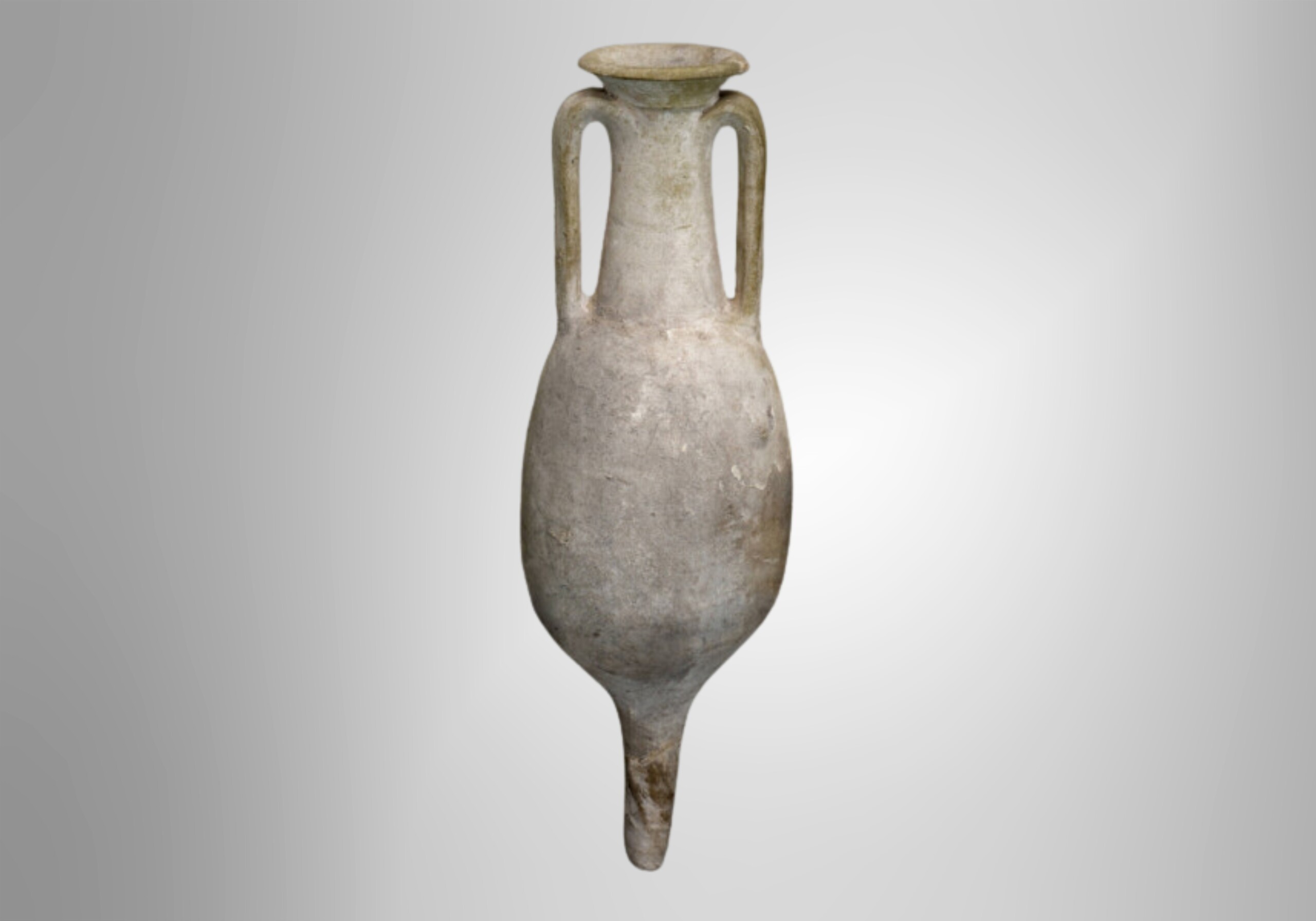
in Italiano / Italian translated by Federica Sebastiano
This object has been translated into 9 different languages by 8 different users
Anfora Romana
Quest’anfora romana ha quasi 2000 anni. È stata trovata originariamente a Cadice, in Spagna, ed è stata riportata al museo come esemplare integro di questo tipo di recipiente. Il fondo ha una forma appuntita per permettere che le anfore si appoggiassero l’una all’altra in modo sicuro quando venivano impilate.
È utile fare un confronto con i pezzi rotti trovati negli scavi di Manchester: essendo fatti di argilla, era facile usarli e gettarli. Quali sono le cose che usate e buttate via, e quali quelle che riutilizzate più volte?
Notes on translation
Most of the translation was rather straightforward but I did encounter some issues with certain words. For instance, I struggled to translate “as a complete example of this type of storage vessel” because a word-for-word translation did not sound natural in Italian. Therefore, I decided to switch some of the words for their synonyms such as “esemplare” rather than “esempio” (“example”) and “integro” rather than “completo” (“complete”). I think these simple changes render the text a lot more natural when read in Italian but I am not completely happy with my translation so I am curious to know how other Italian speakers would have translated it.
Do you have something you’d like to say, in your own language or English, about the object or translation? We’d like to hear what you think.
Translations are community-sourced and for anyone to participate in, however you use your language. For more information, see Community Guidelines.
27 Jun, 2023
Notes on culture
In Rome, there is a port on the river Tiber called Emporio. This port has been used since ancient Roman times and it was particularly useful to receive goods and materials that arrived by sea from the port of Ostia and sailed up the Tiber.
Over the centuries the amphora shards, which were used to hold grain and liquid foodstuffs during transport, accumulated in a mound. This mound became so substantial in size to be awarded the name “Monte dei cocci” (“Mound of shards”).
Today, this mound is commonly known as Monte Testaccio. It is surprising for tourists and Romans to know that the famous Testaccio in fact an artificial hill formed by shards and various debris.
Nowadays, Testaccio is one of the most popular neighbourhoods in Rome. It is one of the cultural centres of the Eternal city but, throughout the centuries, it always managed to maintain its genuine and familiar spirit as Rome’s working-class district.
20 Nov, 2025
I would like to visit Testaccio to buy pizza Ebraica from a famous kosher cake shop called Boccione.